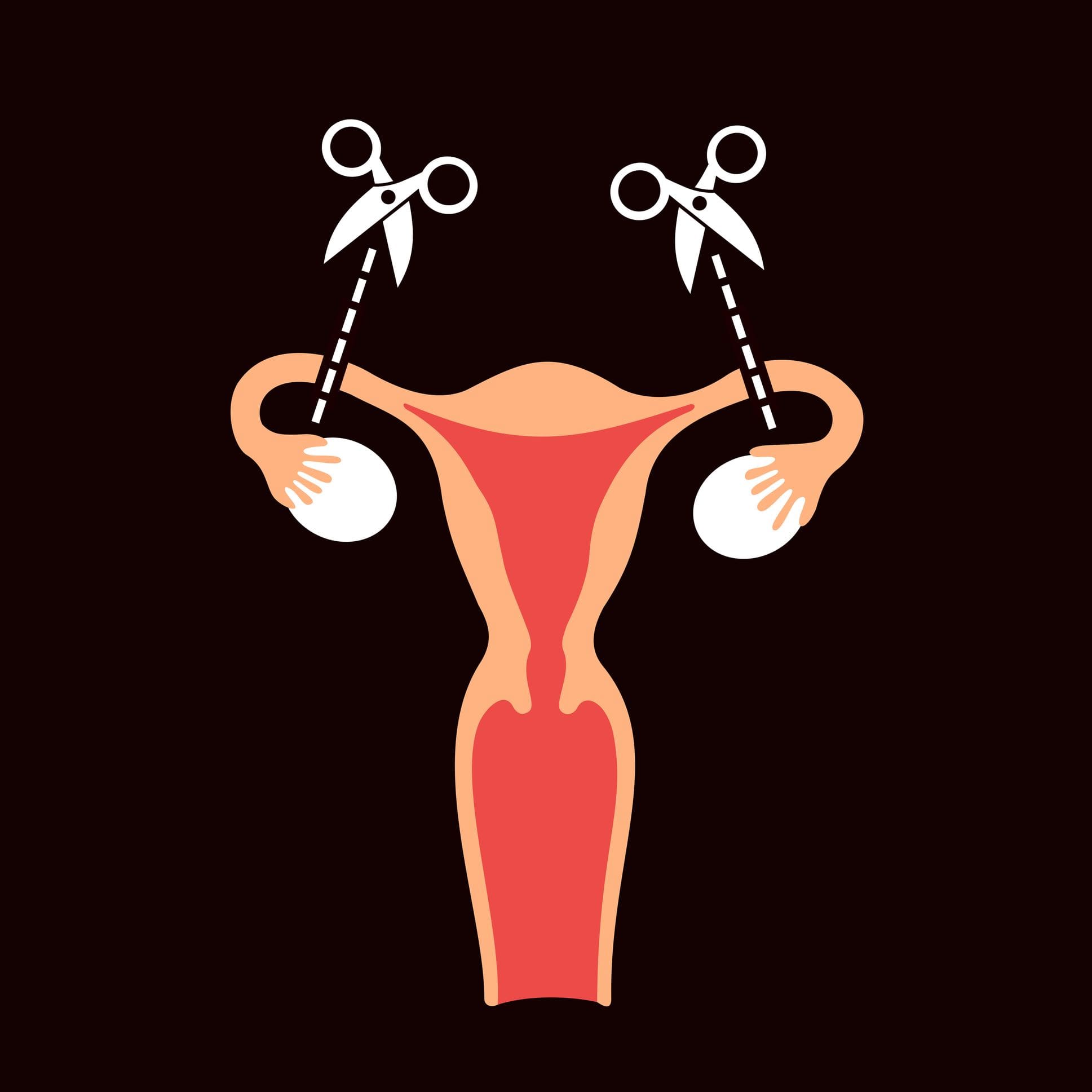What is female surgical sterilisation?
Female surgical sterilisation is a form of permanent contraception that involves sealing off or blocking a woman’s fallopian tubes. It is also referred to as tubal ligation or ‘having your tubes tied’.
How does tubal ligation work?
Tubal ligation works by preventing the sperm from reaching the egg.
Normally, after an egg has been released by one of the ovaries (ovulation), it travels down the fallopian tube towards the uterus. Following ejaculation, sperm normally swim up to the fallopian tubes where an egg can be fertilised. Blocking the fallopian tubes prevents sperm from reaching and fertilising an egg.

The fallopian tubes can be blocked or sealed off during a surgical procedure. This is done by cutting and tying the fallopian tubes or by applying clips, clamps or rings to the fallopian tubes.
How effective is tubal ligation?
Tubal ligation is more than 99 per cent effective at preventing pregnancy.
Tubal ligation is designed to be a permanent form of contraception. While there are procedures that can reverse a tubal ligation, the success rate of fertility returning is only about 50 per cent. In addition, these procedures require surgery and are not suitable for everyone, so sterilisation should always be thought of as a permanent measure.
Which doctor should I see about a tubal ligation?
See your GP (general practitioner) or visit your local Family Planning Clinic if you are considering female surgical sterilisation. You may be referred to a gynaecologist (a doctor who specialises in the female reproductive system) for the procedure.
How is tubal ligation done?
Tubal ligation is usually done as a day surgery procedure. The procedure is usually done under general anaesthetic using a laparoscope (a thin tube with a camera on the end). This is sometimes called keyhole surgery. Laparoscopic procedures allow for much smaller incisions (cuts) to be made in the abdomen (compared with open procedures), meaning that you can recover faster.
There are several different methods of sealing off the fallopian tubes. Clips, clamps or rings can be put on the fallopian tubes, or the tubes can be cut and tied.
Side effects
Side effects from the anaesthetic and surgery are possible. Infection, bleeding and accidental damage to nearby organs (such as the bowel or bladder) are possible but uncommon side effects. The anaesthetic can sometimes cause side effects such as nausea and tiredness.
You may have pain in your tummy or shoulder for a few days after the procedure.
Self-care after a tubal ligation
You’ll probably need to have several days off work after the procedure and will be instructed to avoid heavy lifting for a week or more. Simple pain killers are usually effective at relieving any abdominal or shoulder pain. It may take around a week for you to feel back to normal.
Doctors usually recommend using an alternative form of contraception until you have had your first period after the procedure.
Can female sterilisation be reversed?
It is sometimes possible to reverse a tubal ligation with another surgical procedure. However, the success of reversal procedures is limited, with only about 50 per cent of women having a pregnancy following a tubal ligation reversal.
Therefore, it’s very important that only women who are very sure that they do not want to have children in the future consider having this procedure. You’ll be advised to think carefully about whether a change in your circumstances (such as a new relationship) would potentially alter your decision before having a tubal ligation. It’s also recommended that this procedure is not done at times of stress or straight after childbirth or miscarriage.
A discussion with your doctor, specialist and possibly a counsellor will help make sure that sterilisation is an appropriate form of contraception for you at this stage of your life.
Advantages of tubal ligation
Advantages of surgical sterilisation (tubal ligation) include the following.
- It is a very effective and permanent method of contraception.
- It does not affect sex drive.
- It doesn’t interfere with spontaneity of sexual intercourse.
- There is no affect on your normal hormonal rhythms or periods.
Disadvantages of tubal ligation
Some of the disadvantages of surgical sterilisation include the following.
- It requires surgery, usually under a general anaesthetic.
- There is a risk, albeit low, of surgical complications such as internal bleeding, infection or damage to other organs.
- If the procedure fails and a pregnancy occurs (this is rare), there is an increased risk that it will be an ectopic pregnancy (pregnancy outside the uterus), which can cause serious internal bleeding.
- Reversing the procedure is difficult, so should only be undertaken by women who are absolutely certain that they do not want any (more) children.
- It does not protect you from sexually transmitted infections (STIs).

